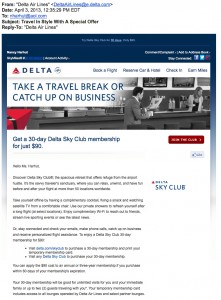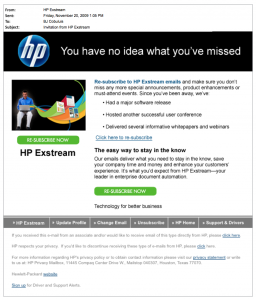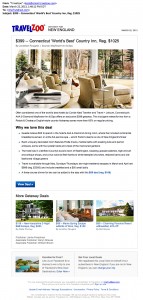Email marketing is not easy. Inbox competition is fierce, and customers and prospects are fickle.
Fortunately, even small budget email campaigns can be crafted to deliver big readership and response rates. The secret? Tapping into the decision-making shortcuts that both consumers and business customers use.
Once you know what shortcuts people default to, you’ll know how to construct your emails to take advantage of them – increasing the likelihood your message will get opened, read, and acted upon.
And scientific research has proven that everyone uses these shortcuts. Why? They save time and mental energy. So even when people aren’t aware of it, they often respond to certain cues or situations with automatic, reflexive behaviors.
Here are three common decision-making shortcuts you can use to make your email campaigns more successful. And the best part is, they are easy to implement and don’t cost you anything extra to apply.
Harness the Ripple Effect of the Consistency Principle
Social scientists have found that people crave consistency. Once someone makes a decision or a commitment, he remains consistent in his future actions regarding it – without giving it much thought.
This is especially true if the first decision is a smaller commitment. And even more so if it is public.
So in your email marketing campaigns, start by getting that first, small (and possibly public) yes. Ask prospects and customers to like you on Facebook. Or to sign a pledge or petition. Or even to download a free piece of relevant content.
You’ll find that this first yes will lead to subsequent (and larger) yeses down the road.
A terrific example of the consistency principle in action is the email Delta sends offering a 30-day Delta Sky Club membership for just $90. Rather than try to immediately sell travelers the full membership, Delta offers a trial or introductory membership. And what Delta is counting on is that a lot of people who took the 30-day membership will say yes when later offered the yearlong one. They’ll remain consistent with their earlier decision.
Use a Negative to Prompt Positive Results
Social scientists have also found that people are more motivated to avoid pain than they are to achieve pleasure. In fact, they are twice as motivated.
So smart email marketers can use this when positioning their products and offers.
Instead of telling customers to “Take advantage” of your new product or service, caution them with a “Don’t miss” message.
Rather than pointing out all the benefits someone will gain from what you’re selling, emphasize what they’ll lose out on if they don’t purchase.
A great example of this loss aversion principle in action is an email that HP sent, trying to get people to re-subscribe to its email series. The headline read: “You have no idea what you’ve missed.”
As a marketer, your initial inclination in a situation like this might have been to focus on all the great things coming up – content that the target would receive as long as he was enrolled. But instead, this approach makes the target feel the pain of what he’s already missed. And that pain can be a very powerful motivator.
Related Class: Advanced Email Marketing Tactics
Gain an Instant Advantage Over Your Competition
One more way you can tap into decision-making shortcuts to make your email marketing more effective is to employ the authority principle.
As children, people are taught to recognize and respect authority. So by the time they’re adults, they have a natural tendency to accept what authorities say. It’s very common when seeing the recommendation of an authority to assume that he is the expert and has already done the necessary research.
So if you have endorsements from a person or entity that would be considered an expert, use that person. He will immediately catapult you to the top of the consideration set.
Travel Zoo employed the authority principle when it described a Connecticut inn as “World’s Best” and cited reviews by Conde Nast, Travel & Leisure, and AAA. Travelers reading this would feel there’s no need to research other inns because the work has already been done. They simply trust the authorities.
In summary, your targets will decide whether to read and respond to your email in seconds. Tap these three decision-making shortcuts to prompt them to take the actions you want.


